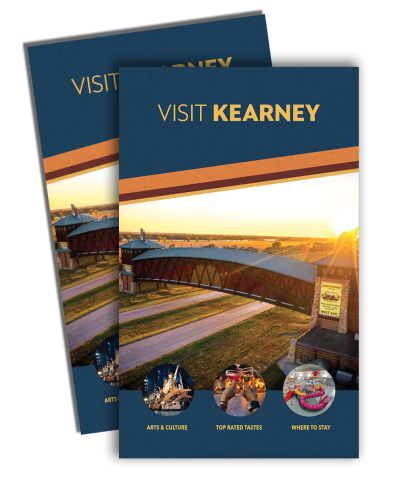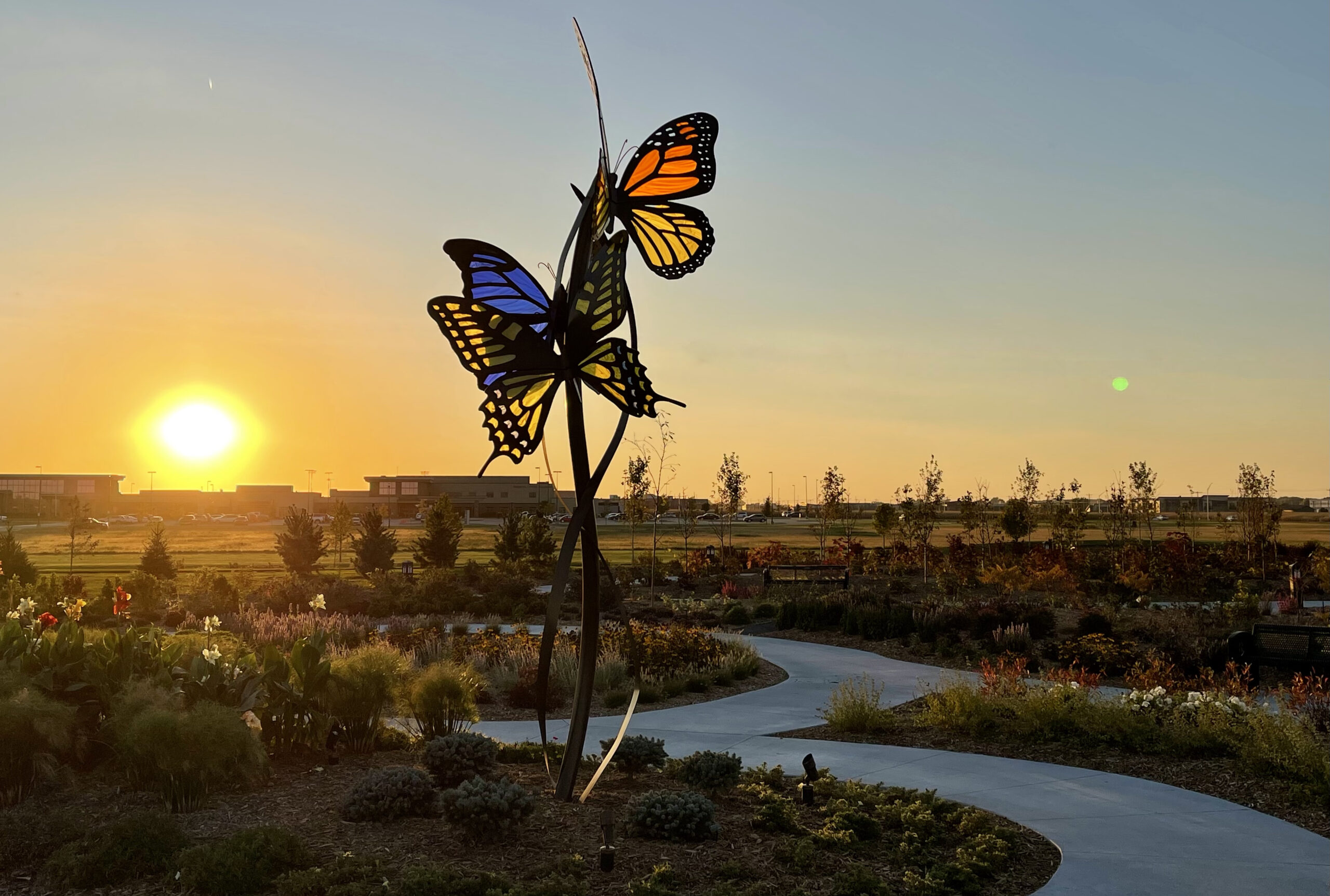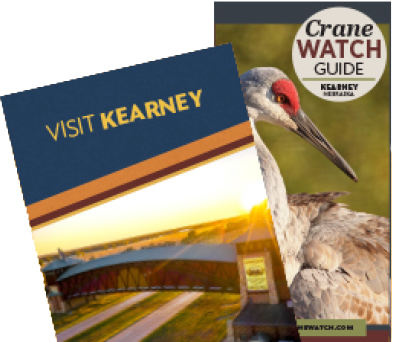Sandhill Cranes
Public Viewing Sites
The Kearney area has multiple options for public viewing, designated areas are provided for different times of the day. Pull-offs offer opportunities for day-time viewing while cranes are as in the fields, while the Plautz Viewing Platform and Fort Kearny Bridge, spanning the Platte River, offer perfect sunrise and sunset viewing.
Learn MoreViewing Etiquette
Not only is your crane experience our top priority, but we also want everyone else to enjoy theirs as well. Make sure to read through more about Crane Viewing Etiquette guidelines for your safety, the safety of others, and the safety of the birds. Feel free to call us at 308-237-3178 for any additional questions. We would love to help you!
Learn MoreRowe Sanctuary
Located just 20 minutes from Kearney, the Iain Nicolson Audubon Center at Rowe Sanctuary lies right in the heart of a critical spring staging area for migrating Sandhill Cranes.
Construction Update: Currently the Visitor’s Center is closed for renovations, check-in for Guided Tours will be held in a tent for sunrise and sunset tours near the parking lot. Indoor bathrooms will not be available, but there are outdoor toilets near the Discovery Stations and on the trails. Parking near the Visitor’s Center may be limited due to construction vehicles. Watch for signage.
Learn MoreGuided Tours
Experience the miraculous migration with a guided tour at Rowe Sanctuary. Reservations for its 2024 crane viewing opportunities on Wednesday, January 3, 2024, at 9:00 am CST. Reservations may be made online here. We highly recommend a guided tour where you will watch from a Discovery Station strategically placed along the Platte River to provide excellent views of Sandhill Cranes on their river roost. Tours are held at sunrise and sunset. Each tour lasts approximately two hours and is led by trained guides.
Learn MoreCrane Cam
Live camera from Rowe Sanctuary is part of the nature cams on Explore.com – the best times to view them on the river is early mornings and evenings.. The morning liftoff either happens slowly, with smaller groups of cranes leaving as the sun continues to rise, or more frequently with tens of thousands of sandhill cranes leaving all at once in a cloud that blots out the sky. Cranes return to the river in the evening to spend the night on the river’s shallow sandbars. Groups of cranes pour into the river silhouetted by the setting sun as they dance and socialize before falling asleep.
View Live Crane CamTrails at Rowe Sanctuary
There are 15 miles of gravel, trails along the river at Rowe Sanctuary. During Crane Season trails are open daily from 10:00 am – until 4:00 pm, but this may be subject to change depending on the location of cranes on the river. From March-April, access to the trails is strictly prohibited outside of these times to protect the birds from disturbance while on the river. Trails will be clearly marked, some may also be closed due to construction. Visitors will not be able to see cranes on the river from Rowe’s trails.
Learn MoreSelf Guided Tours
Use our Crane Watch Guide Map to help you navigate to various crane viewing locations to create your own crane viewing adventure. Pick from one of our suggested itineraries or create your own.
Learn MoreQ&A
When is the best time to come? What should I pack? Where should I go to view the cranes? We want you to have a memorable and educational experience, so we’ve compiled a list of frequently asked questions to help you get started!
Learn MoreThe Platte River Valley
The Platte River Valley is the most important stopover on this migration. The river provides the perfect spot to rest, and the nearby farmlands and wet meadows offer an abundance of food. Without the energy gained along the Platte, cranes might arrive at their breeding grounds in a weakened condition — where food may be limited until the spring growing season begins.
The Platte River region has a variety of habitats that support cranes. The most important is the Platte River itself. The river is very shallow and sandbars dot the channels. It is here the cranes rest at night, gaining protection from predators like coyotes.
Fast Facts
The spring migration population of sandhill cranes in the Central Nebraska Flyway is estimated at 650,000.
Height — 3 to 4 feet
Wingspan — 6 feet
Weight — 8 to 12 pounds
Color — Gray
Migration — 170 to 450 miles/day
Flight Speed — 38 mph
Mating — Begins at age 3 to 4
Eggs — 2 per year
Other Birding Guides
Each spring, something magical happens in the heart of the Great Plains. More than 80 percent of the world’s population of sandhill cranes converge on Nebraska’s Platte River valley. Along with the cranes, come millions of migrating ducks and geese in the neighboring rainwater basins. Learn more about other birdwatching opppunititees in the area.
Learn More
Crane Watch Brochure
Request your FREE Crane Watch Brochure today and start planning your visit!
Request Guide View Crane Watch Guide
Visitors Guide
Request your FREE Visitors Brochure today and start planning your visit!
Request Guide View Guide























